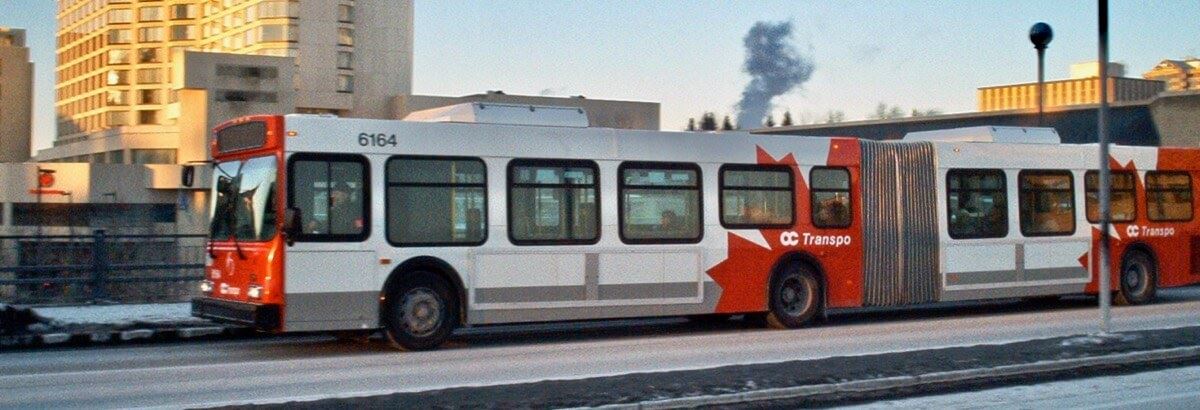The History
Before the LRT, what type of rapid transit system was offered?
The original system was Bus Rapid Transit (BRT). Buses would operate down dedicated roadways, known collectively as the Transitway, and stopping at large Bus Stations, typically located at popular destinations, which also allowed a transfer to local and other bus routes.
What type of vehicles were used on the Transitway network?
On high frequency and major cross city routes, typically the routes 95 and 97, 60 foot long articulated (accordion) buses were used. They allowed for a high passenger capacity and offered easier boarding due to 3 sets of doors, that would all open at each station stop.
What models of buses were primarily used on the Transitway routes?

Starting in 1985, they started acquiring the Orion Ikarus 286, which was also known as Orion III (pictured above). By 1988 they numbered 162 in the fleet. They were later joined by an additional 24 ex-TTC buses, that arrived between 1997-1999. The Orion Ikarus served the Transitway for almost 18 years and were retired in 2003.

From 2001 onward, the New Flyer D60LF (pictured above) and later in 2010, the D60LFr have been in service. The D60LF and D60LFr currently number 359 in the fleet.
What was the main issue with the Transitway network that the LRT solves?
The Transitway passed through the downtown core, along Albert Street (heading Westbound) and Slater Street (heading Eastbound). At peak periods of the weekday, buses had to pass through approximately a dozen traffic lights, as well as board and disembark passengers at the main stops. It was common to see a lineup of buses for several blocks or more as one stopped bus boarding passengers or one red light would halt the entire flow. The LRT solved this by creating the downtown tunnel, to pass the trains underneath the street, thereby solving this bottleneck, by providing a dedicated right of way, free of traffic lights or stopped vehicles.
When was the LRT first opened?
The LRT first opened in October 15, 2001 with the Trillium Line.
How many stations were in the initial LRT?
There were 5 stations on the initial LRT network. They are found on the Trillium Line and are Bayview, Carling, Carleton, Confederation (later renamed to Mooney's Bay) and Greenboro.
How long did it take to construct the initial networks of the Trillium and Confederation Lines?
The time to construct the initial Trillium Line is difficult to determine as it was initially a pilot project, almost entirely using already existing Canadian Pacific Railway track. The only work required was building the actual stations and the passing tracks at Carleton Station. The initial Confederation Line construction began in 2013 and was completed in 2018.
What was the cost to construct the LRT?
The Trillium Line was built at a cost of $21 million, due to the use of the already existing Canadian Pacific Railway tracks. The Confederation Line was built at a cost of $2.1 billion.